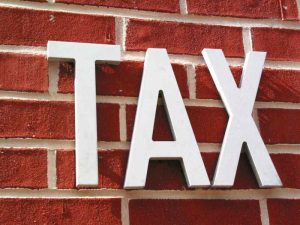Online Electricity Bill Calculator – For all states in India
- Self Assessment of monthly energy consumption based on the appliances
- Online Electricity Bill Calculator
- Links to check latest per unit electricity rates in various states in India
- Steps to use the tool:
- This calculator will help you:
- Visit the following weblink for more understanding on Electricity Tariff of all States
For most of us, the electricity bill is needed just to check the final amount and make the payment. We at Bijli Bachao asked a lot of our acquaintances about how much they understand their electricity bills, and we found hardly a handful who did understand it. And in spite of understanding the bills, not many knew how much they are spending per unit (or 1 kWh) of electricity.
- Self Assessment of monthly energy consumption based on the appliances
- Online Electricity Bill Calculator
- Links to check latest per unit electricity rates in various states in India
- Steps to use the tool:
- This calculator will help you:
- Visit the following weblink for more understanding on Electricity Tariff of all States
It is very important to know the per-unit cost of electricity as it helps us in understanding how much we are spending per appliance at our home. It is important to understand the monetary impact of any electricity efficiency measure we take. It is also important to understand various components of electricity bills and what is their contribution to the total electricity bill. In a bid to help people understand the same, we have created this online electricity bill calculator that will help people understand how much they spend on various appliances every month and how they can save by doing various activities. Please make sure that you read about the calculator below before using it.
Self Assessment of monthly energy consumption based on the appliances
It is important to assess the appliances connected in your house and for the hours the same is used. You can also make a table of the appliance and the power rating mentioned on the named plate. For ease of calculation, most of the power companies provide a calculator for self-assessment and this can be checked on the website. However, for ready reference, we are providing here for UPPCL link. For this go to the link below and click the UPPCL link
Domestic Electricity LT Tariff (Urban) Fixed Charges and Unit Rates for all states in India
Online Electricity Bill Calculator
Please note that this tool currently works only for domestic tariffs.
Links to check latest per unit electricity rates in various states in India
Click on this link: Domestic Electricity LT Tariff Slabs and Rates for all states in India
Steps to use the tool:
1) Select Utility: Once you log in, the first thing you need to do is select utility. Select your state, district and utility and the system save your information for the user session automatically.
2) Enter Units: Enter this value as shown on your electricity bill. This shows up as units consumed.
3) Select Phase: Select if you have a three-phase connection or single-phase connection. This information is also available on the electricity bill.
4) Connected Load: It is decided by the utility based on appliances you have at your home, please see our article on connected load to get more details.. It is also mentioned as sanctioned load, load, connected load, or approved load. If the load mentioned is in Watts (it is a number is 100s or 1000s) then divide it by 1000 and enter it.
This calculator will help you:
1) Understand various components of your electricity bills.
2) Understand how much you are paying per unit (1 kWh) of electricity bill.
3) Understand how much you spend on various appliances like lights, air conditioner, refrigerator, tube light, computer, set-top box, fan, etc. Please note that we have taken approximate usage of these appliances based on how it is used normally in houses. Actual amount may vary as per your use. The values are just a representation.
4) Understand savings if you switch from inefficient to efficient appliances. Even these values are an approximation based on general usage. We are in the process of building tools to help you get to better values as per your consumption in future.
The tool has been built with latest tariff data available from all the state electricity boards in India and has maximum information as available on the internet and through our contacts who helped us with sample electricity bills from various states. Certain values have been rounded to have better readability and so it may not match exactly to your electricity bills but will be very close.
The tool covers the following bill components:
1) Energy Charge: This is the per-unit electricity charge that you pay on your bill. It is mostly defined slab wise and the cost increases as units on electricity bill increase.
2) Fixed Charge: This is mostly dependent on the connected load that the utility provides you. Connected load is typically calculated as a sum of wattage of all the appliances that you have at your home. The utility allocates this much amount of electricity for your home and that is why the fixed charge is applicable.
3) Electricity Duty & Tax: This is the government tax for using electricity. Duty is applicable per unit of electricity consumption and tax is applied on the whole bill amount.
4) Meter Rent: Rent that you pay for having a meter at your home. Rates are different for single-phase and three-phase connections. This will not be applicable if you pay for the meter cost at the time of taking the connection.
5) Wheeling Charge: The tool also helps you find out how your bill gets impacted if you move from Reliance Energy to Tata Power in Mumbai. Wheeling charges are applicable for the switchover.
6) Minimum Monthly Charges: In some states, if the consumption is less than a certain amount, minimum monthly charges are applicable, which means that the bill amount cannot be less than minimum monthly charges.
The tool does not cover the following elements:
1) FAC (Fuel adjustment charge) or FCA (fuel cost adjustment) or FPPCA (Fuel and Power Purchase Cost Adjustment): This is the amount which utilities apply on bills based on the varying price of fuel or Coal. Every month this value is different and is derived based on the current cost of Coal. Typically this a few paise per unit.
2) Arrears/Interest and Other Charges: If your electricity bill has old payment pending and interest on the same, or any other charges, then those will not match from the output of the tool to your electricity bill.
Visit the following weblink for more understanding on Electricity Tariff of all States
- https://www.bijlibachao.com/news/domestic-electricity-lt-tariff-slabs-and-rates-for-all-states-in-india-in.html
- https://www.bijlibachao.com/infographics/various-elements-of-electricity-bills.html
- https://www.bijlibachao.com/electricity-bill/electricity-duty-and-tax-on-electricity-bills-in-india.html
The tool currently in beta stage works only for:
Domestic LT (Low Transmission) connections with a connected load between 0 and 20 kW and has been validated for following states: Andhra Pradesh, Assam, Bihar, Chandigarh, Chattisgarh, Gujarat, Haryana, Karnataka, Kerala, Madhya Pradesh, Maharashtra, New Delhi, Rajasthan, Tamil Nadu, Uttar Pradesh and Uttarakhand. It also contains information for following states but has not been validated: Arunachal Pradesh, Goa, Himachal Pradesh, Jammu and Kashmir, Jharkhand, Manipur, Meghalaya, Mizoram, Nagaland, Odisha, Punjab, Sikkim, Tripura and West Bengal.
About the Author:
Abhishek Jain is an Alumnus of IIT Bombay with almost 10 years of experience in corporate before starting Bijli Bachao in 2012. His passion for solving problems moved him towards Energy Sector and he is keen to learn about customer behavior towards Energy and find ways to influence the same towards Sustainability. More from this author.


